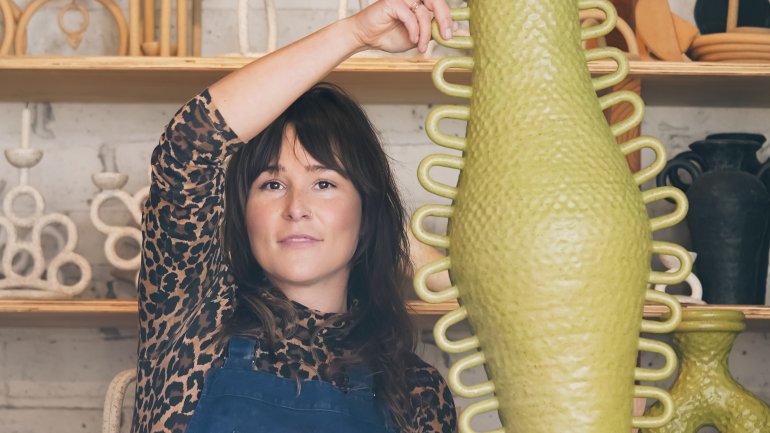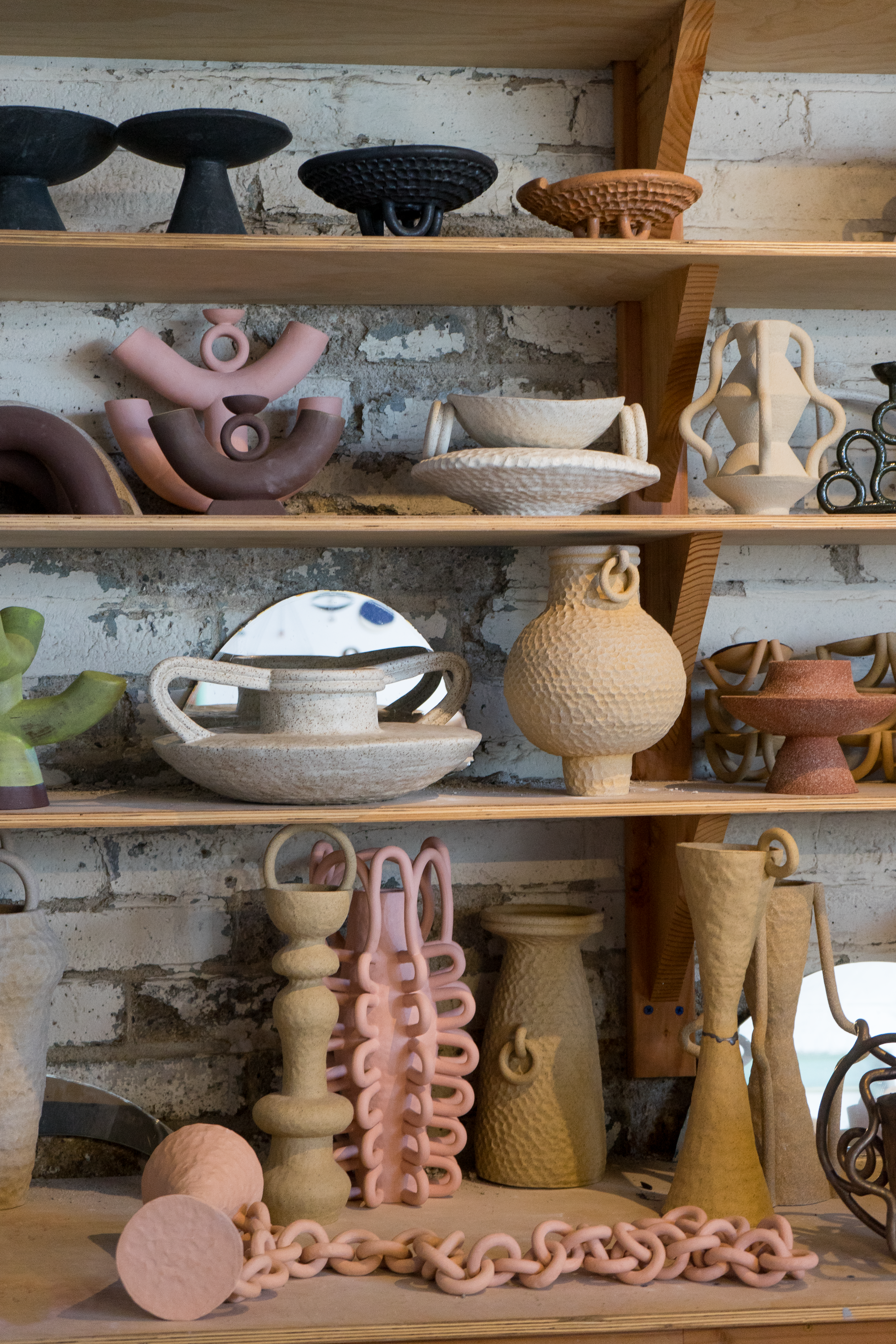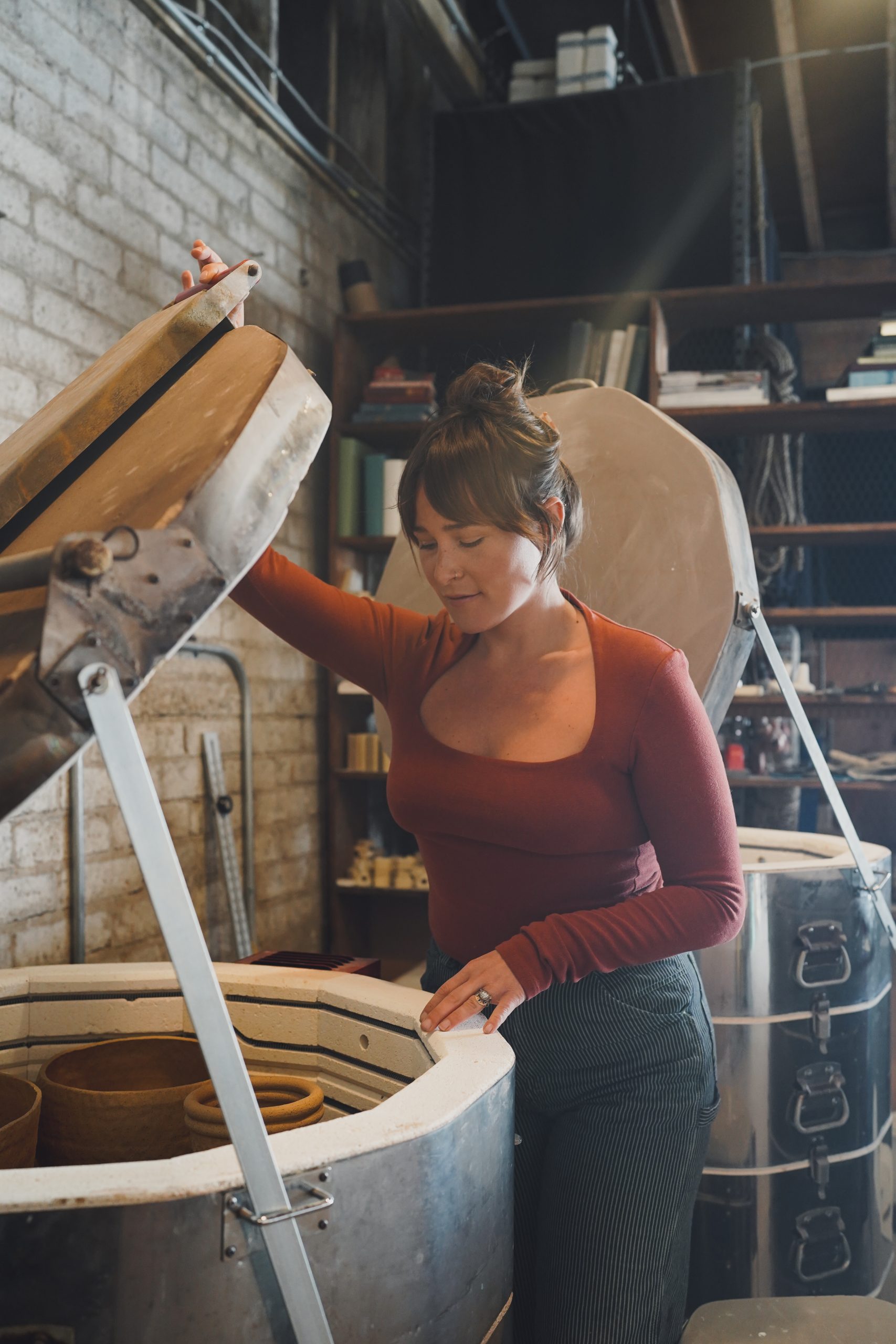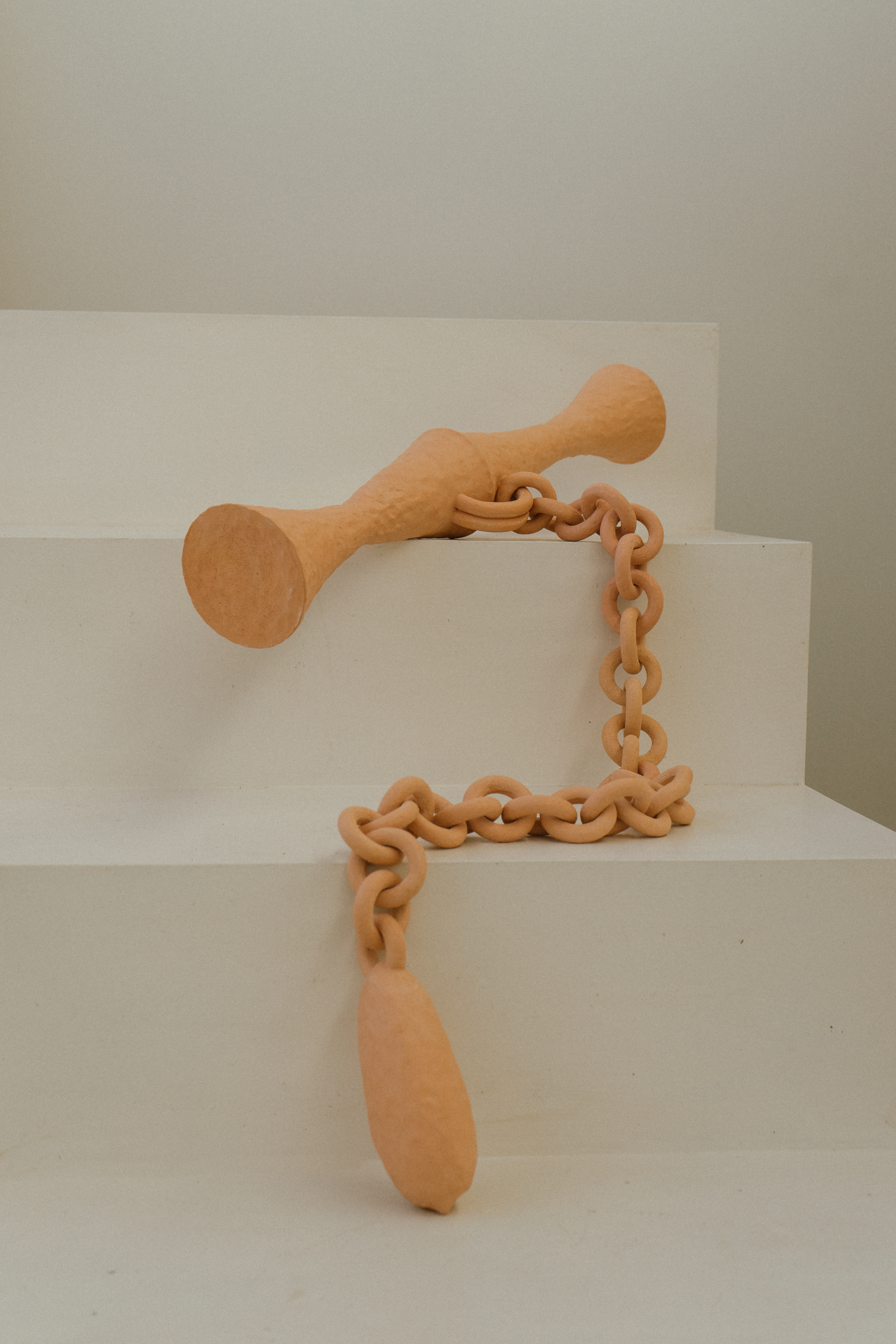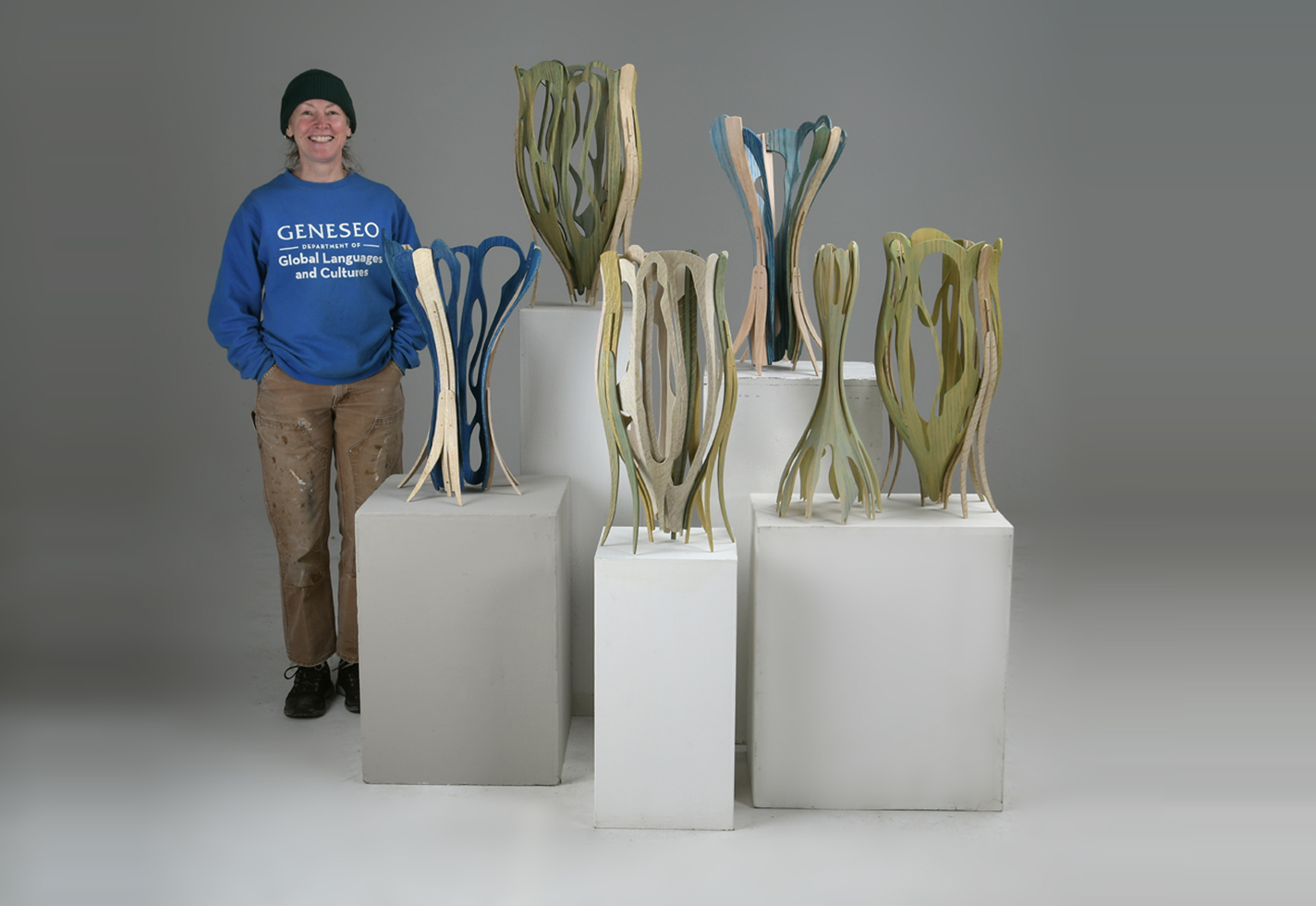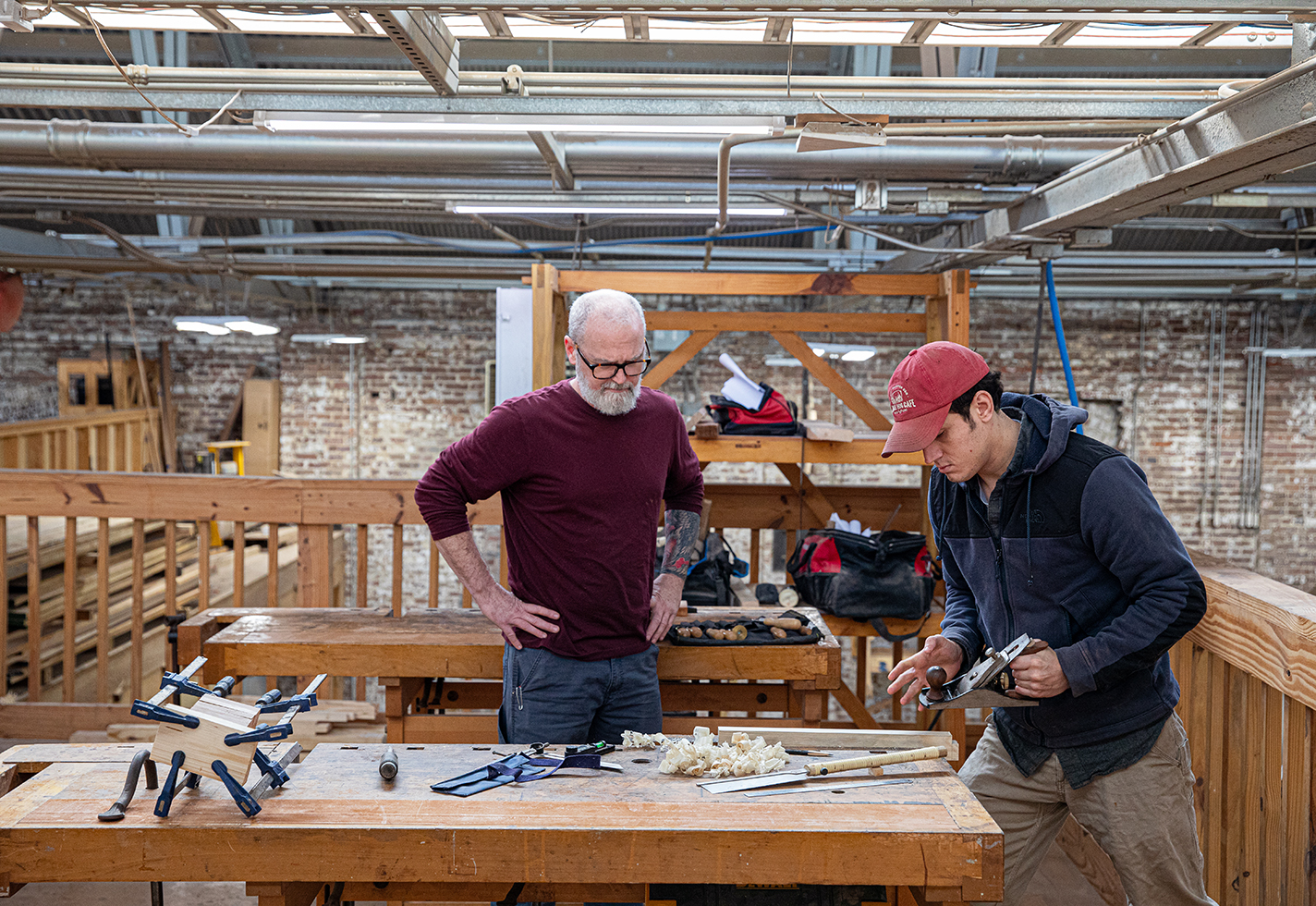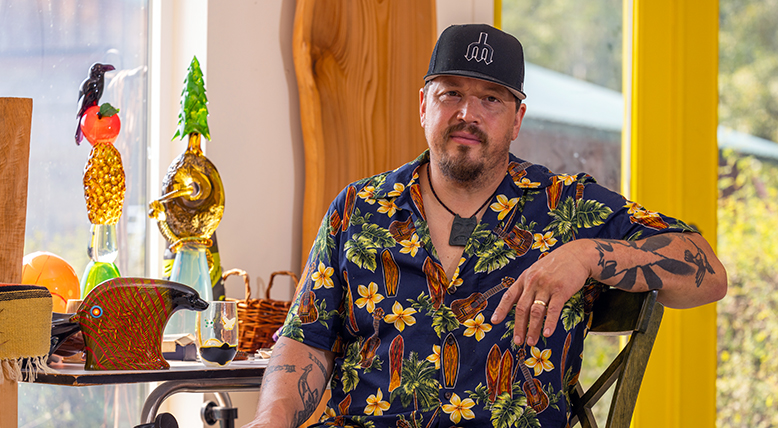The Latch Key’s Whitney Sharpe transmutes clay into powerful ritual objects.
Sharpe’s stoneware vessels strike an imposing figure. Her vases, dimpled with fingerprints and gritty in texture, are bedecked with heavy ceramic chains, which can be used to hang the vessel or as decoration. When lit, her tiered sculptural candelabras cast intriguing shadows across a room. The Oakland, California–based ceramist, who has been working under the name the Latch Key Ceramics since 2014, has been drawn to objects her whole life. “My earliest memories are of investigating objects: tapered candles and their holders, lace doilies, antique porcelain dolls, an oil painting of two girls lounging in Victorian dress, and the house my father built,” says Sharpe. In 2017, she cofounded Standard Parts Studios, an interdisciplinary community studio in Oakland, where she makes all her work. Shivaun Watchorn wrote about her lace candelabra, made with ritual in mind, in “Light My Fire” in the Spring 2024 issue of American Craft.
How do you describe your work or practice in 50 words or less?
My practice is a 3D meditation on my experience. Transmutation is what I strive for, imbuing the joys and sorrows of life into clay as an opportunity for metamorphosis. My art practice is my spiritual practice, offering a place of exploration and remembrance. Clay is my medicine and greatest collaborator.
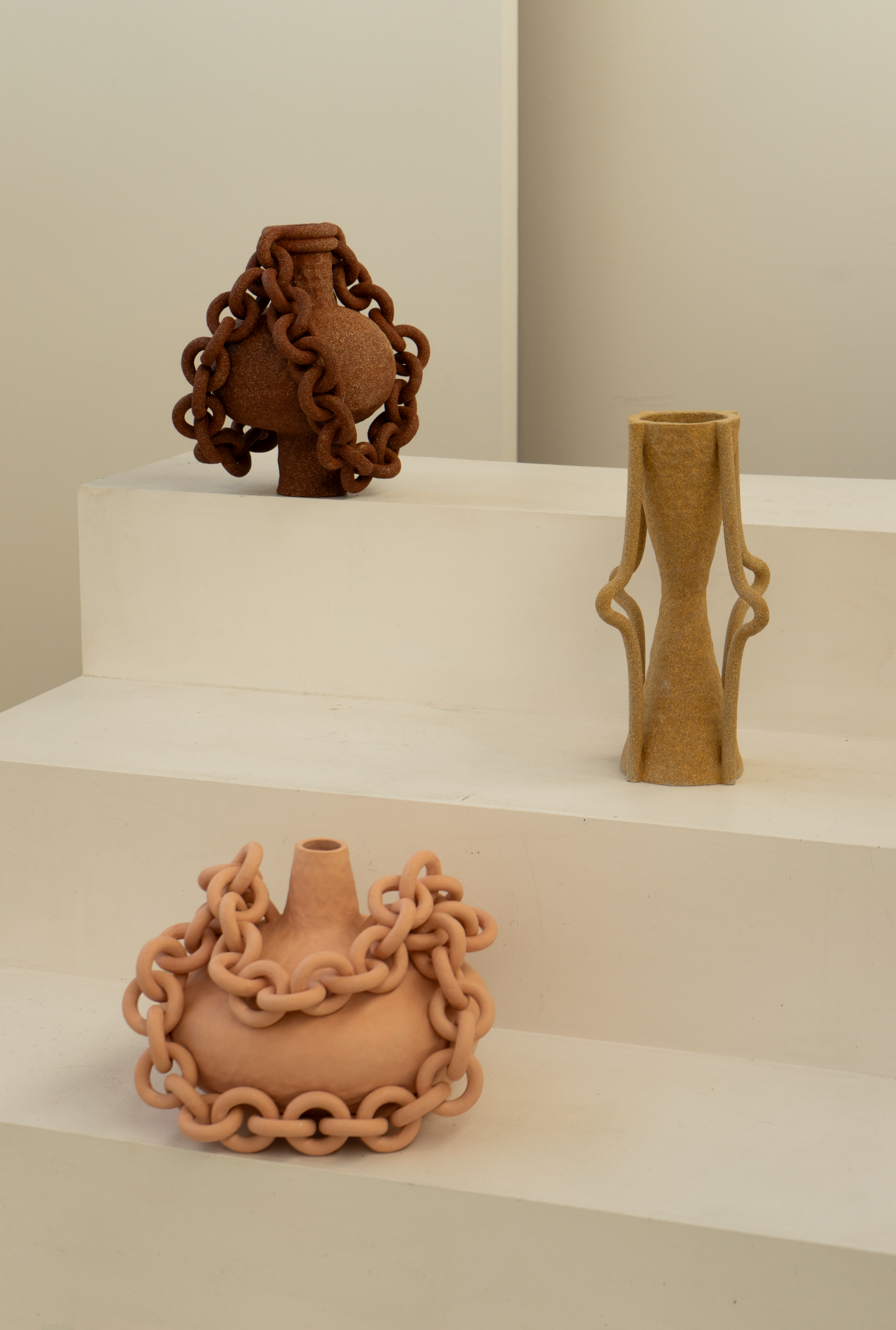
Three 2024 ceramic chained vessels by Sharpe, 14 x 14 x 14 in. (top), 16 x 10 x 8 in. (middle), 16 x 16 x 16 in. (bottom).
